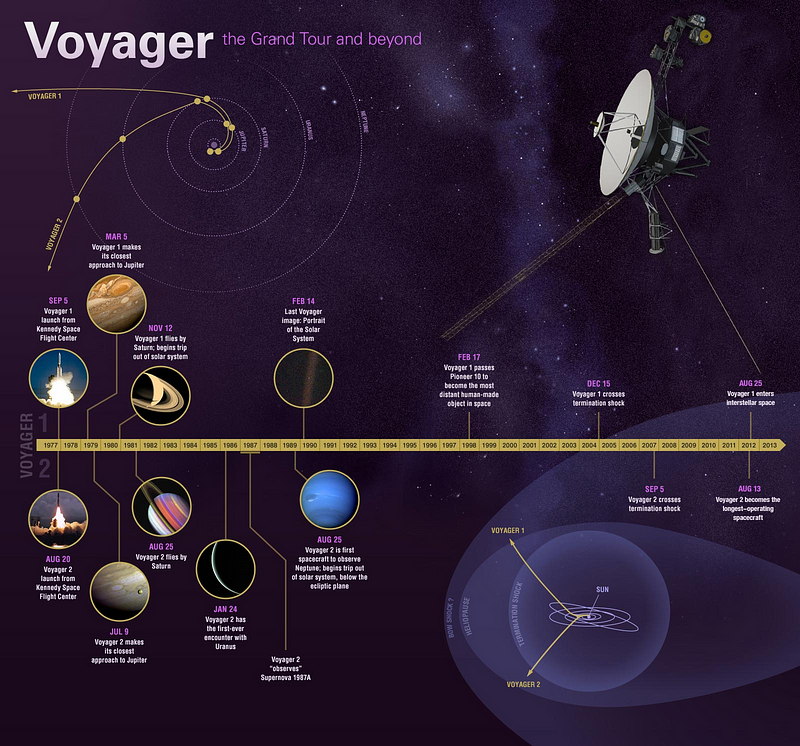Voyager 1: A Journey Beyond the Solar System
Written on
Chapter 1: The Voyager Missions
The Voyager program, which includes the remarkable Voyager 1 and 2 spacecraft, has significantly bolstered our aspirations of venturing into interstellar realms. Launched in September 1977, Voyager 1 stands as the most distant human-made object, continuously transmitting data from the depths of space.
In 1979, Voyager 1 made its first significant flyby of Jupiter, followed by Saturn in 1980. Traveling at an impressive speed of approximately 38,000 mph (61,200 kph), it crossed the heliopause in August 2012, marking its entry into interstellar space.

Section 1.1: Discovering the Hum of Plasma Waves
Voyager 1 continues to provide a unique perspective on the universe, offering insights into the nature of interstellar gas. Recent research conducted by Cornell University indicates that the spacecraft has detected a persistent hum from plasma waves, which are essentially vibrations of gas in space.
"It's very faint and monotone, because it is in a narrow frequency bandwidth. We're detecting the faint, persistent hum of interstellar gas," explains Stella Koch Ocker, a researcher involved in the study.

Subsection 1.1.1: The Significance of Interstellar Research
This discovery not only enhances our understanding of low-level activity in interstellar gas but also reduces our reliance on sporadic solar flares to monitor the distribution of plasma in deep space. Understanding the density of interstellar space is crucial for grasping the scientific principles governing these vast distances.
Researchers believe that with Voyager 1's capabilities, they can continuously assess the density of interstellar gas, offering insights that were previously unattainable.
Section 1.2: Technological Marvels of Voyager 1
Despite being equipped with technology from the mid-1970s, Voyager 1 remains operational, sending back invaluable information. According to NASA's Jet Propulsion Laboratory, the spacecraft operates on a mere 22 watts to transmit signals back to Earth. It initially boasted a data rate of 21 kilobits per second, which has now decreased to 160 bits per second due to the vast distance.

Chapter 2: Looking Ahead
In summary, while NASA plans future interstellar missions, the Voyager spacecraft remain our best source of knowledge about deep space. Their ongoing contributions continue to illuminate the mysteries beyond our solar system, ensuring that even "primitive" technology can yield profound insights into the cosmos.

Stay updated with the most relevant information—join my mailing list.